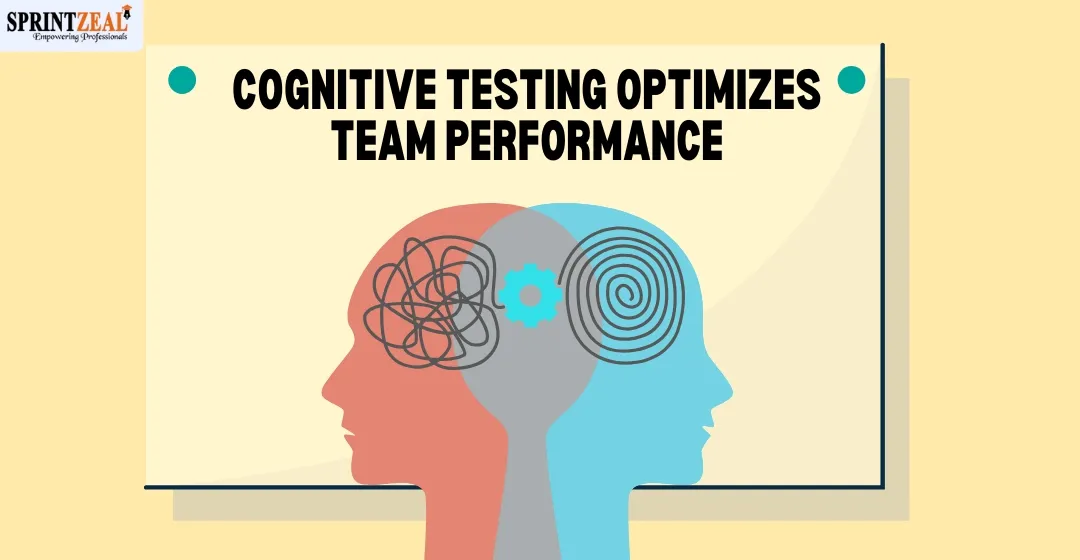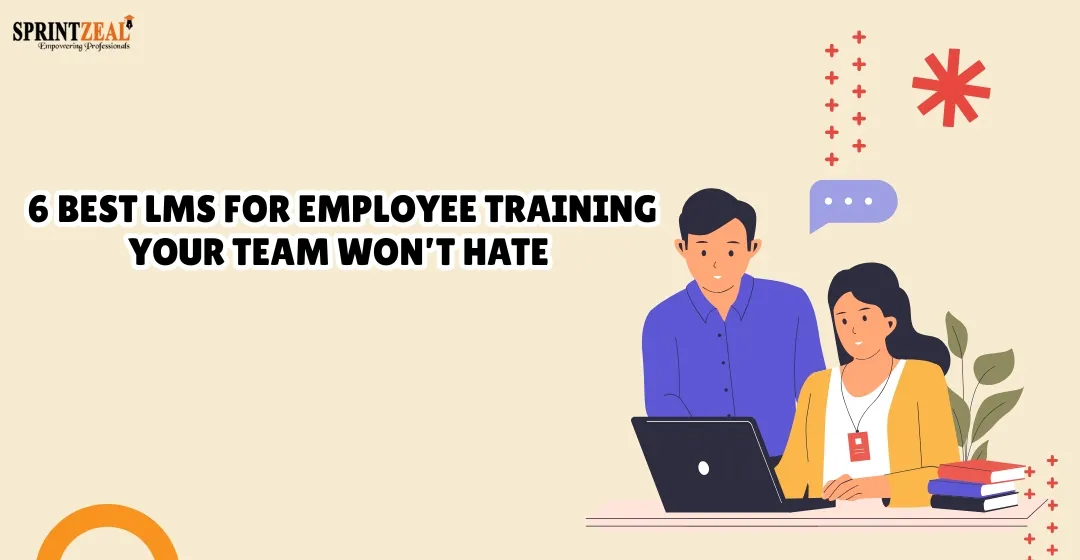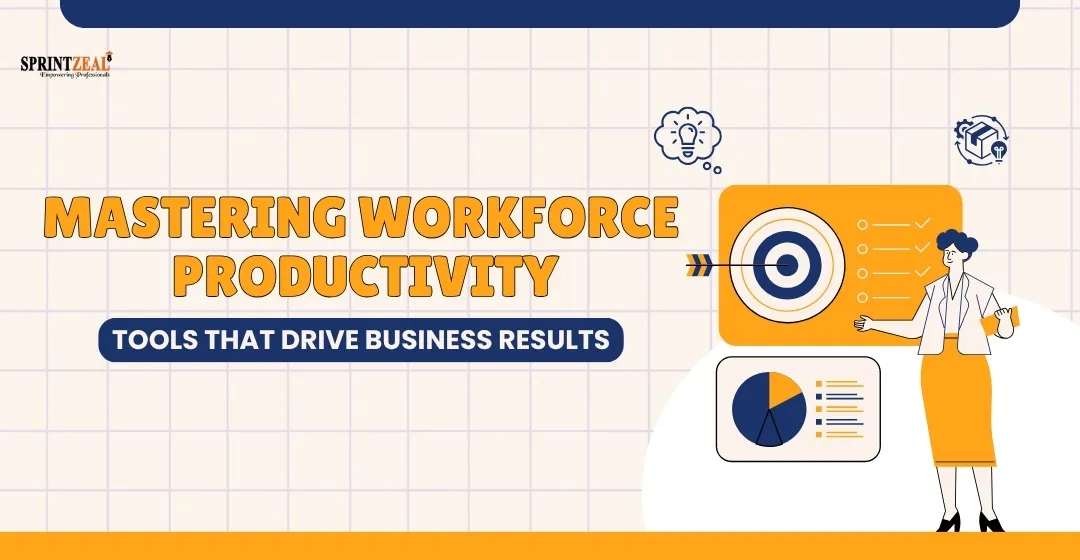How Cognitive Testing Can Optimize Agile Team Performance
-
 By Sprintzeal
By Sprintzeal - Published on Sep 17 2025

Agile methodology thrives on speed and adaptability, allowing teams to stay competitive in fast-changing environments. Frameworks like Scrum, Kanban, and SAFe bring structure to workflows, yet they often miss a critical factor—the cognitive capacity of the people using them.
When cognitive load is high, even the most efficient process can slow down. To truly maximize mental agility and sustain team productivity, organizations must also consider how quickly individuals can process information and make effective decisions. In this article, we’ll explore in detail how improving cognitive performance can directly enhance Agile team success.
Table of Contents
Understanding Cognitive Performance in Agile Teams
In Agile teams, cognitive performance is not the same as IQ—it’s about how well individuals handle the mental demands of fast-paced collaboration. Strong cognitive agility helps members adapt, prioritize, and maintain clarity under pressure.
Key components include reaction time, or how quickly someone processes information and responds; focus and attention, which sustain productivity during stand-ups, sprints, and retrospectives; and decision-making speed, crucial for resolving blockers efficiently. When these areas weaken, teams face delays, miscommunication, and decision fatigue.
Simple tools such as a reaction speed test can provide objective insights into processing speed, attention span, and working memory, helping leaders understand and strengthen the team’s collective mental sharpness for sustained Agile performance.
Why Traditional Agile Metrics Don’t Tell the Full Story
Traditional Agile metrics like Velocity, Burndown Charts, Lead Time, and Cycle Time are widely used to evaluate productivity. These Agile KPIs track how much work is completed and how efficiently tasks move through the pipeline. While useful, they primarily measure output—the visible results of a sprint—rather than the mental performance driving those outcomes.
For example, a team may meet velocity targets while silently struggling with cognitive overload, lapses in focus and attention span, or decision fatigue during problem-solving. This creates hidden blockers that standard charts can’t reveal.
It’s like knowing a car’s top speed but ignoring whether the driver is alert, distracted, or exhausted. Without insights into cognitive agility, processing speed, and working memory, performance gaps remain unnoticed. To close this gap, teams must complement traditional metrics with methods that reflect the human side of Agile—how sharp, focused, and responsive the team truly is.
3 Ways Cognitive Testing Elevates Agile Performance
Optimizing Sprint Planning and Task Allocation
Cognitive insights can make sprint planning more effective by aligning task assignments with individual strengths. For example, a member with strong reaction speed may excel in fast troubleshooting, while others with higher mental energy and sustained focus might handle complex, detail-heavy tasks.
Recognizing these cognitive patterns supports better workload balance and prevents mismatched responsibilities. It also helps leaders identify early signs of burnout risk, ensuring the team maintains consistent performance without draining their collective focus and attention.
Improving Daily Stand-Ups and Rapid Problem-Solving
Daily stand-ups thrive on fast communication, where every second counts in keeping the sprint on track. By tracking reaction time, teams can uncover subtle delays that slow down discussions and create hidden communication bottlenecks.
When team members respond quickly and clearly, blockers are identified and resolved faster, directly improving sprint health. For example, a quicker reaction during a stand-up can mean immediate problem recognition, leading to faster real-time decision making and fewer downstream delays.
Enhancing stand-up efficiency isn’t about rushing—it’s about sharpening communication speed so the team can adapt and move forward without friction.
Driving Smarter Retrospectives with Data
Retrospectives are the heartbeat of continuous improvement, giving teams space for honest reflection and growth. Beyond process discussions, incorporating cognitive insights—like average reaction time results can highlight issues often missed.
For example, if the team’s reaction speed drops compared to previous sprints, it may signal fatigue, meeting overload, or loss of focus. This objective data encourages deeper conversations during retrospectives, shifting them from guesswork to evidence-based process optimization.
By blending subjective feedback with measurable signals of mental performance, teams can uncover hidden challenges and refine their approach for more sustainable, high-performing collaboration.
Practical Guide to Implementing Cognitive Testing in Agile
Implementing cognitive testing tools in Agile doesn’t have to be complicated. The key is to frame it around team wellness and performance growth, not micromanagement.
Step 1: Introduce the concept openly, explaining how it supports focus, energy, and sustainable performance.
Step 2: Select a quick, non-intrusive option such as an online Reaction Time Test, which can be done in minutes.
Step 3: Establish a baseline measurement so the team understands their starting point.
Step 4: Use the data to spark conversations at the team level, avoiding individual comparisons or punitive reviews.
Step 5: Track results sprint-to-sprint to spot trends in focus, mental agility, or dips in collective energy.
By integrating these steps into agile coaching and performance monitoring, leaders create a culture where mental fitness is valued alongside delivery speed. This balanced approach strengthens both productivity and long-term collaboration.
Addressing Concerns and Misconceptions
When introducing cognitive testing to an Agile team, concerns often arise. Some may worry, “Won’t this feel like micromanagement?” In reality, the focus is on team wellness and creating a culture of psychological safety, not surveillance. Others might ask, “Isn’t this just another vanity metric?”
The answer is no—because reaction speed directly affects decision-making, communication efficiency, and ultimately sprint outcomes. Finally, it’s natural to wonder, “Will this replace traditional metrics?”
Instead, cognitive insights act as a complement, adding depth to velocity and output-based KPIs, ensuring better metrics balance during Agile adoption and improving overall team buy-in.
FAQs
What Is Cognitive Performance In Agile Teams?
Cognitive performance in agile teams refers to how effectively team members process information, solve problems, make decisions, and adapt to change. High cognitive performance supports agile principles by enabling faster iterations, better collaboration, and continuous learning in dynamic environments.
Why Are Traditional Agile Metrics Like Velocity Or Lead Time Not Enough?
Traditional Agile metrics like velocity and lead time are not enough because they measure output, not team effectiveness or adaptability. These metrics overlook cognitive load, collaboration quality, and decision-making speed—factors critical for agile success in complex, fast-changing environments.
How Can Cognitive Testing Improve Sprint Planning?
Cognitive testing improves sprint planning by identifying mental workload, information bottlenecks, and decision fatigue. By analyzing team cognition, leaders can balance tasks, prevent overload, and assign work more effectively—resulting in clearer goals, better focus, and higher sprint efficiency.
Can Reaction Time Tests Really Enhance Agile Performance?
Reaction time tests can enhance Agile performance by measuring how quickly team members respond to changing priorities or new information. Faster reaction times indicate better cognitive readiness, helping teams adapt swiftly, reduce delays, and maintain momentum during sprints.
Does Cognitive Testing Replace Existing Agile KPIs?
Cognitive testing does not replace existing Agile KPIs; it complements them by adding insight into mental performance, decision-making, and team adaptability. While KPIs track delivery metrics, cognitive data reveals how teams think and react, enabling deeper analysis and smarter adjustments.
Is Cognitive Testing Intrusive For Agile Teams?
Cognitive testing is not intrusive for Agile teams when implemented with lightweight tools and minimal disruption. Modern methods use short, non-invasive assessments that fit into workflows, allowing teams to gain cognitive insights without affecting autonomy, morale, or daily performance.
What Is The Future Of Cognitive Testing In Agile?
The future of cognitive testing in Agile involves real-time analytics, AI-driven insights, and seamless integration with team tools. As Agile evolves, cognitive metrics will guide workload balance, enhance team health monitoring, and support faster, smarter decision-making across sprints and projects.
Final Thoughts
Agile thrives on speed and adaptability, but true success depends on the often-overlooked factor of human cognition. By focusing on cognitive agility and mental fitness, teams can unlock higher productivity and resilience.
A simple first step is using free tools like a reaction time test to uncover patterns in focus and responsiveness. Just as fitness trackers revolutionized physical health, human performance metrics will soon become standard in the future of Agile. Teams that embrace this shift will not only improve output but also build healthier, sharper, and more sustainable collaboration for the long run.
Subscribe to our Newsletters
Popular Programs
Trending Posts
Designing Training Slides to Simplify Complex Concepts
Last updated on Oct 22 2025
The 3 AI-Powered Email Warmup Tools You Should Consider for Outreach
Last updated on Aug 26 2025
Managing Work More Effectively: Top Picks for Organizing Team Tasks
Last updated on Apr 29 2025
Top Team Leader Job Interview Questions & FAQs
Last updated on Sep 5 2025
6 Best LMS for Employee Training Your Team Won’t Hate
Last updated on May 29 2025
Mastering Workforce Productivity: How Time and Communication Tools Drive Business Results
Last updated on Jun 12 2025
Categories
- Other 62
- Agile Management 57
- Cloud Computing 50
- Project Management 170
- Big Data 58
- Business Management 79
- Digital Marketing 73
- IT Service Management 29
- Programming Language 47
- AI and Machine Learning 67
- IT Security 108
- Quality Management 77
- IT Hardware and Networking 25
- Microsoft Program 4
- Workplace Skill Building 11
- Risk Management 9
- Information Security 8
- Leadership and Management 7
- Corporate Training and Development 1
Trending Now
Top 10 Productivity Training Courses for Workplace
ArticleSelf-Introduction for Interview: Tips & Best Examples
ArticleManaging Work More Effectively: Top Picks for Organizing Team Tasks
Article6 Best LMS for Employee Training Your Team Won’t Hate
ArticleMastering Workforce Productivity: How Time and Communication Tools Drive Business Results
ArticleTop Reasons Why Binding Format Matters in Training Manuals
ArticleThe 3 AI-Powered Email Warmup Tools You Should Consider for Outreach
ArticleTop Team Leader Job Interview Questions & FAQs
ArticleStreamlined Success: Blending Digital Tools and Physical Planners for Optimum Productivity in 2025
ArticleDesigning Training Slides to Simplify Complex Concepts
Article






